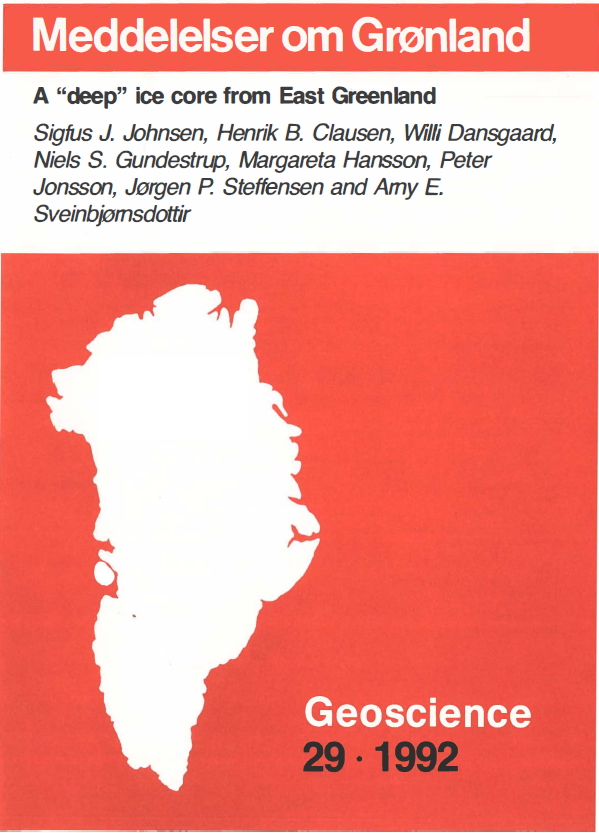A "deep" ice core from East Greenland
DOI:
https://doi.org/10.7146/moggeosci.v29i.140329Abstract
Pilot studies on the Renland peninsula in Scoresbysund Fjord, East Greenland, indicated that the relatively small and separate Renland ice cap meets most of the criteria defining a favourable ice-core drill-site. In 1988, a Nordic expedition recovered a continuous surface-to-bedrock ice core from the summit. This relatively short core reaches deep into the past, probably throughout the last glaciation and through most of the preceding interglacial, Eem, 125,000 years B.P. The core contains detailed information on temporal changes of the coastal environment, and serves as a valuable complement to the new deep ice cores being drilled in Central Greenland. Core analyses suggest that (1) during Eemian time the East Greenland climate was at least 5°C warmer than now, and the precipitation 20% higher; (2) during the last glacial period, the precipitation decreased to a minimum, perhaps only 20% of the present value; (3) the post-glacial climatic optimum was 2.5°C warmer than now; (4) the long-term variability of the record is relatively low, due to isostatic movements in the area; and (5) from 70,000 years B.P., the Greenland glacial climate alternated between two quasi-stable stages. The latter point may reflect a chaotic feature of climate. If so, climate predictions will be difficult to access.

Downloads
Published
How to Cite
Issue
Section
License
Coypyright by the authors and the Commision for Scientific Research in Greenland / Danish Polar Center. No parts of the publications may be reproduced in any form without the written permission by the copyright owners.

